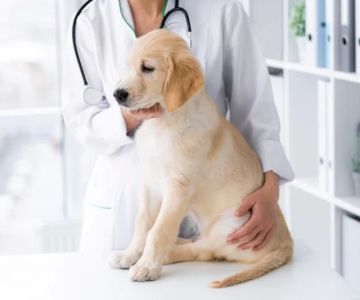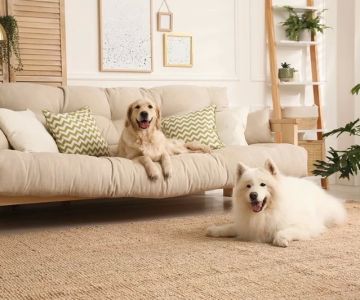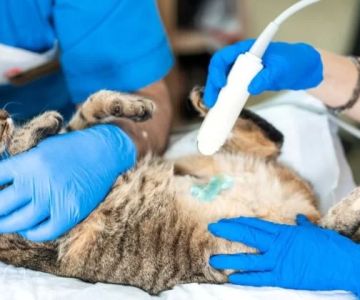- 1-understanding-dog-grooming-anxiety
- 2-why-your-dog-may-struggle-during-grooming
- 3-key-techniques-to-help-your-dog-be-calm-during-grooming
- 4-step-by-step-guide-for-training-your-dog-for-grooming
- 5-how-to-create-a-positive-grooming-experience-for-your-dog
- 6-when-to-seek-professional-help
- 7-recommended-products-to-ease-dog-grooming-stress
Understanding Dog Grooming Anxiety
Grooming is an essential part of dog care, but for many dogs, it’s a stressful experience. Whether it's the sound of clippers, the sensation of being brushed, or simply being restrained during the session, dogs can develop anxiety related to grooming. This can result in behaviors like excessive barking, squirming, or even aggression. Understanding why dogs experience grooming anxiety is the first step in addressing the issue and creating a calm, enjoyable grooming experience.
Why Your Dog May Struggle During Grooming
Several factors could contribute to a dog’s resistance or anxiety during grooming. Here are some of the most common reasons:
1. Negative Past Experiences
Dogs that have had negative experiences with grooming—whether it’s painful brushing or a bad visit to the groomer—can develop a fear of the process. These past experiences can make grooming sessions feel threatening, which increases stress.
2. Sensitivity to Touch
Some dogs are more sensitive to touch than others. This can make certain grooming tasks, like nail trimming or brushing, uncomfortable for them. If your dog has sensitive spots or is particularly ticklish, they may resist grooming due to discomfort.
3. Lack of Socialization
Dogs that have not been properly socialized or are not used to regular grooming routines may feel fearful of the grooming tools or the process itself. Familiarity is key to reducing stress in these cases.
Key Techniques to Help Your Dog Be Calm During Grooming
Training your dog to stay calm during grooming takes patience, consistency, and a gentle approach. Here are some proven techniques that can help:
1. Start Slowly with Positive Associations
Begin by introducing your dog to grooming tools in a non-threatening way. Let them sniff and investigate the tools without any pressure. Gradually build up positive associations by rewarding your dog with treats or praise each time they calmly interact with a tool.
2. Create a Calm Environment
A calm, quiet environment is essential for a stress-free grooming experience. Avoid noisy distractions, and ensure that the grooming space is peaceful. Play soft music or use calming pheromones to help soothe your dog.
3. Use Desensitization and Counter-Conditioning
Desensitization involves gradually getting your dog used to the grooming process. Start by touching their paws or brushing their fur for a few seconds at a time, gradually increasing the duration. Pair this with rewards to create a positive experience, helping your dog associate grooming with good things.
4. Regular Practice
Consistency is key. Incorporate short grooming sessions into your dog’s routine to build familiarity and trust. This will help your dog understand that grooming is a regular, non-threatening part of life.
Step-by-Step Guide for Training Your Dog for Grooming
Here’s a simple, step-by-step guide to training your dog for grooming:
1. Introduce Grooming Tools Gradually
Start with a calm environment and allow your dog to get used to grooming tools. Let them sniff and explore brushes, combs, and clippers. This should be done without any grooming happening at first.
2. Begin with Light Touches
Gently touch your dog with the grooming tools, starting with the least invasive tools (like a soft brush). Reward them with treats for staying calm and allow them to adjust to the sensations.
3. Short Grooming Sessions
Start with brief grooming sessions, focusing on one area at a time. For example, start with brushing their back, then gradually move to their legs and paws. Keep each session under 5 minutes, and always end on a positive note with a treat or praise.
4. Use a Gentle, Slow Approach
Never rush the grooming process. A slow and gentle approach helps prevent your dog from feeling overwhelmed. If your dog shows signs of stress, take a break and try again later.
How to Create a Positive Grooming Experience for Your Dog
To make grooming a more pleasant experience for your dog, consider the following strategies:
1. Build Trust with Your Dog
Trust is essential for a positive grooming experience. Spend time bonding with your dog outside of grooming sessions. Play, walk, and provide lots of positive reinforcement to strengthen your relationship.
2. Use Positive Reinforcement
Always reward your dog for calm behavior during grooming. Use high-value treats and praise to reinforce positive actions. This helps your dog associate grooming with rewards and reinforces the calm behavior.
3. Patience is Key
Be patient with your dog during the grooming process. If your dog becomes anxious, take a step back and allow them to relax before continuing. Over time, they will learn to associate grooming with calmness and comfort.
When to Seek Professional Help
While you can train your dog at home, there are times when seeking professional help is necessary. If your dog’s anxiety or aggression during grooming becomes severe, or if they refuse to cooperate despite consistent training, it’s a good idea to consult with a professional dog trainer or a groomer who specializes in anxious pets. They can offer personalized guidance and techniques to help your dog feel more comfortable.
Recommended Products to Ease Dog Grooming Stress
There are several products designed to make grooming more comfortable for your dog. Some of the best include:
1. Calming Sprays
Calming sprays with natural ingredients like lavender or chamomile can help reduce anxiety before grooming sessions.
2. Grooming Mats and Ramps
For dogs who struggle with being restrained, grooming mats or ramps can provide a more comfortable and secure experience.
3. Specialized Brushes and Combs
Gentle brushes designed for sensitive skin or coats can make grooming more comfortable and less stressful for your dog.
If you're looking for the best products or additional services, check out Hidden Brook Veterinary for the latest in dog grooming products and expert advice.











